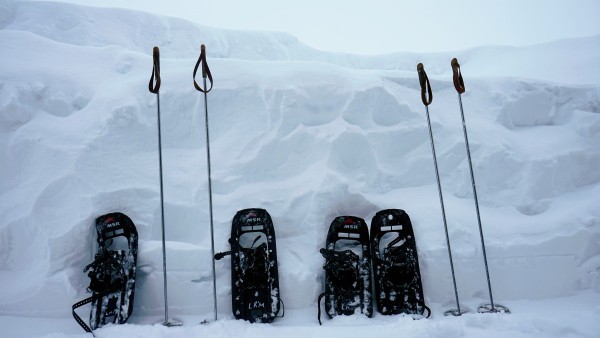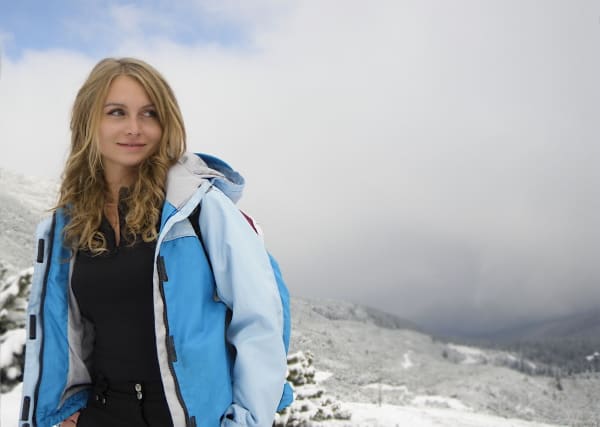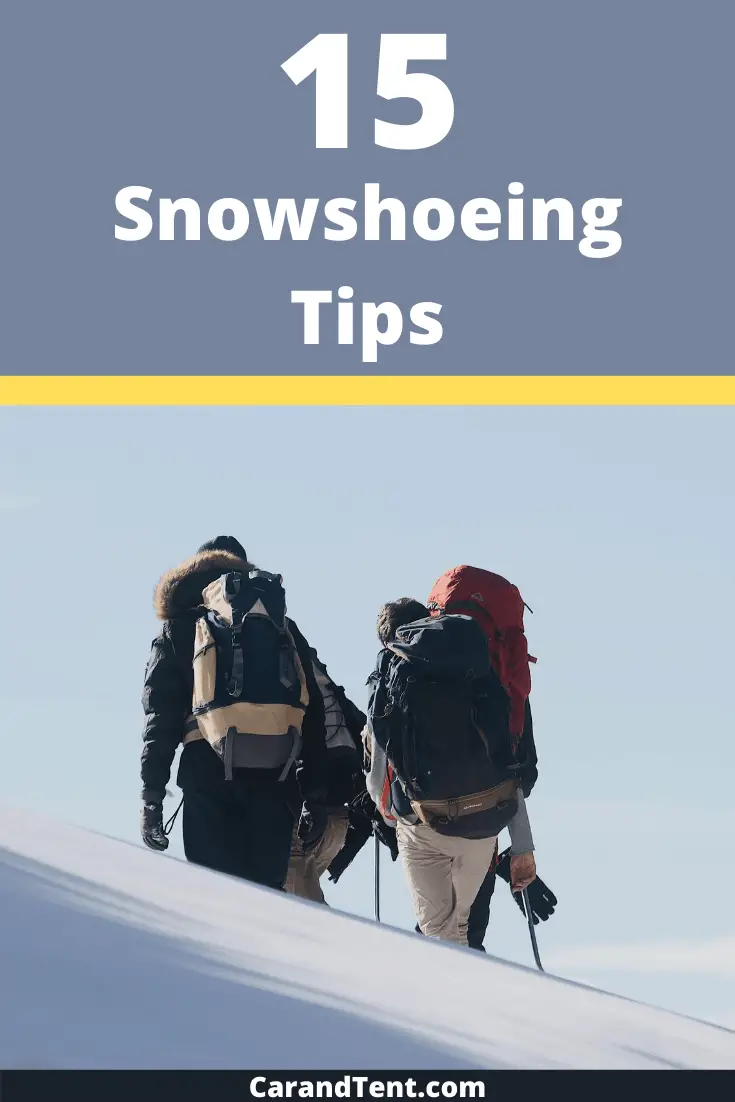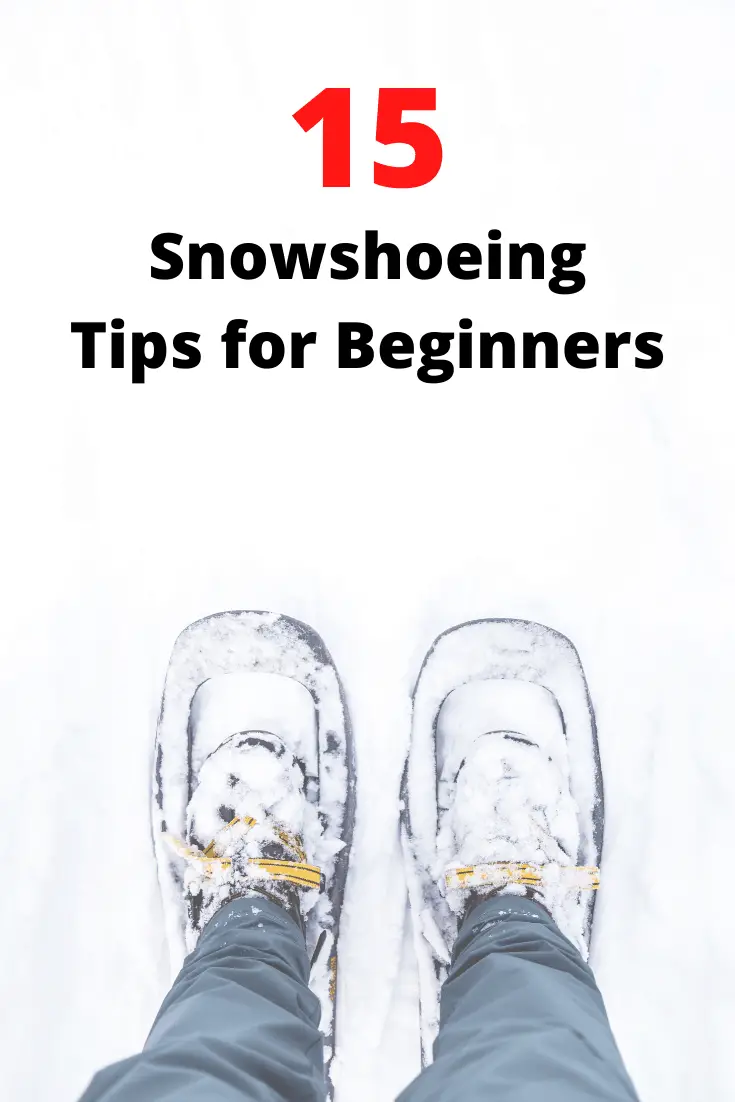
Snowshoeing is a lot of fun and it isn’t very difficult. However, there are a few things that beginners need to know before they head out into the snow.
Here are my best snowshoeing tips for beginners.
Table of Contents
1. Never Walk Backward
Snowshoes aren’t designed for walking backward. In fact, if you try to take a step backward, the heel of the snowshoe will get caught in the snow. This could lead to a fall and you may find it difficult to get back up.
Instead of walking backward, just turn yourself around in a forward motion. This will keep your snowshoes in the correct position and will keep you from getting stuck in the snow.
Here is a quick video from the Utah State Parks and Recreation Department that demonstrates this perfectly.
2. Learn Basic Snowshoeing Techniques
In addition to not walking backward, there are a few other considerations you need to take when walking in snowshoes. For starters, you’ll want to learn the basics of walking both uphill and downhill in snowshoes.
Walking Downhill In Snowshoes
The technique you use for walking downhill in snowshoes will differ depending on what type of snow you’re walking in. When walking downhill in powder, you’ll probably end up moving quickly. In this case, you’ll want to keep your back upright and use your poles for balance. You’ll quickly pump your knees and you’ll keep them slightly bent throughout your stride.
When walking downhill in hard snow, you’ll want to move much slower. Make sure that with each step you take, your snowshoe cleats are driven into the snow. This will help keep you from sliding on the ice or from falling over. Again, use your poles to help provide you with extra balance.
Walking Uphill in snowshoes
Walking uphill in snowshoes is less complicated than walking downhill. In hard snow or ice, you’ll drive your snowshoe into the snow so that your crampons grip the snow. Once you’re confident that your foot is secure, take the next step. Repeat this process until you’re up the hill.
Moving uphill through powder requires a little more technique and can be more time-consuming. With powder, you need to make sure that the ground is securely packed down before you fully commit to the step. This may mean that you need to pack the snow down with your snowshoe with each step. Once the ground is packed down, take your step and repeat the process.
Here is a good video demonstrating how to walk uphill in powder.
3. Don’t Ruin Cross Country Ski Trails
Snowshoeing is fun but so is cross-country skiing. Don’t take away a cross country skier’s fun by ruining his or her trail.
How do you know if you’re on a cross country ski trail?
In most cases, the trails will be marked specifically as cross country ski trails. Just keep an eye out for the trail signs and you should be able to identify and avoid these trails.
Other areas may have mixed-use trails instead. In this case, snowshoers and cross country skiers will have to share the snow-covered trail. In this case, you’ll want to stay off to the side of the trail.
If other snowshoers have already walked the trail, stay within their footpath. Otherwise, stay to the side so that skiers can go straight down the middle of the trail. This will both keep you out of their way and keep you from destroying the trail.
4. Take It Easy
Snowshoeing isn’t very difficult to master but it is challenging. My advice would be to ease into the hobby. Don’t start off by going deep into the backcountry as you’ll only be adding many additional potential issues to worry about.
For example, snowshoeing can put you in the path of avalanche-prone areas and areas with incredibly deep snowdrifts. When you snowshoe in areas like this you’ll need a locator beacon. You’ll also need to take additional safety measures that will make the trip a bit more stressful and a little less fun.
Instead of going through all of this, start out in a field or in an area that doesn’t have a whole lot of snow. Sure, you can snowshoe in areas with several feet of snow, but you can also snowshoe in areas with as little as 6 inches of snow.
Start off in areas with just enough snow to use your snowshoes and staying safe becomes much easier. This will give you the chance to get used to walking in snowshoes and you’ll be better prepared for the deep snowdrifts when you visit them on future trips.
5. Get in Shape First
Another thought to keep in mind is that snowshoeing is physically exhausting. This makes it a great tool for losing weight and building up your level of physical fitness. In fact, I’ve read that a person will burn up to 1,000 calories an hour while snowshoeing!
The downside to all of this is that snowshoeing isn’t for everyone. If you’re not in good shape, you may want to stick to hiking in the snow for a while until you’ve built up your strength and stamina.
Also, once you do decide you’re ready to go snowshoeing, you may want to consider limiting the number of miles you do in one day. I’d recommend that your first few trips consist of out and back trails or loops shorter than 5 miles. With snowshoes on, you’ll probably only be able to move at about 2 miles per hour so this will still give you two and a half hours of non-stop snowshoeing fun.
6. Consider Getting Medical Clearance
One thought to keep in mind before doing any strenuous winter sports is the fact that cold weather can be incredibly hard on a person’s heart. According to WebMd.com, “cold temperatures cause arteries to tighten, restricting blood flow and reducing the oxygen supply to the heart, all of which can set the stage for a heart attack”. On top of this, the heart needs more oxygen in cold weather to help keep the body warm.
Because of this, you may want to get a thorough checkup from your doctor before snowshoeing. This is especially true if you’re in a higher risk category for heart disease.

7. Wear the Right Snowshoes
Snowshoes come in different weight limits as well as different classes. You’ll find racing snowshoes, recreational snowshoes, and backcountry snowshoes. For beginner snowshoeing, your best bet is to get a nice pair of recreational snowshoes. Of course, this can vary and if you plan on taking on a snowshoe race or a backcountry adventure for your first trip, then, by all means, choose a racing snowshoe or a backcountry snowshoe.
As far as weight limits go, just get a pair of shoes that are rated to support the weight of you and whatever gear you plan to bring along with you. The ranges are usually pretty liberal so don’t feel like you need to get an exact weight down before you pick up your first pair of snowshoes.
8. Consider Using Poles
Technically, you really don’t have to have a set of poles to go snowshoeing with. This is especially true if you’re just going for a short trip in areas with shallow snowfall. However, you can’t go wrong with a nice set of snowshoe poles.
Snowshoeing poles add stability and decrease the chances that you’ll fall down on the trail. They can also be used to check for hazards that could be buried underneath of the snow.
Also, you’ll definitely need them if you plan on doing a lot of backcountry snowshoeing so it’s a good idea to get used to them from the beginning. On top of all of this, the poles add some weight and complexity to snowshoeing so you’ll get an even greater workout with them than without them.
9. Pack Plenty of Food and Water
As we said earlier, snowshoeing burns a lot of calories. Within an hour of snowshoeing, I’m always ravenously hungry so I never go on a trip without at least bringing a snack with me.
You’ll also want to pack a lot of water as well. Even if you layer properly, you’ll probably still end up sweating more than you ever would have thought you would. In the cold, you may not feel like you need to drink as much water but dehydration will occur regardless of the outside temperatures. Bring plenty of water and you won’t have to worry about this problem.
Just keep in mind that water can freeze while you’re out on the trail. For this reason, it’s best to pack water that has not been refrigerated as it’ll be less likely to reach freezing temperatures during your adventure.
10. Protect Yourself From the Sun
Luckily, your clothing will cover most of your skin so you won’t have to worry too much about lathering up. You will, however, want to apply sunscreen to any areas of your face that are exposed to the sun. The sun sits lower in the sky during the winter so you’re actually more likely to get sunburned in the winter than you are in the summer.
In addition to sunscreen, you’ll also want to make sure you bring a good pair of sunglasses or snowshoeing goggles. Snow is highly reflective and can cause snow blindness. This is basically a sunburned cornea and it can cause a temporary loss in vision. Not only this, but sunburned eyes are painful and can lead to long term damage such as cataracts.
11. Dress Appropriately
While we’re on the subject of covering up your skin, it should be noted that you should dress in multiple layers. The main reason for this is so that you can shed layers as you go. You’ll find that the extreme amount of energy that it takes to snowshoe will warm you up faster than you ever would have thought. In fact, I’m usually unzipping my first layer within 15 – 20 minutes of when I start.
When you dress in layers, make sure that the layers that are closest to your skin have moisture-wicking properties. Polypropylene and other synthetic blends make perfect base layers as they are great at trapping heat while simultaneously pushing moisture away from the body.
For your outer layer, choose something bright. A black or white coat will not stand out in the snow very well. This means that if you end up needing help, it could be harder to find you. Instead, wear a brightly colored coat or at least a brightly colored hat so that you’ll be easily visible in the snow.

12. Go Someplace Public
To further increase your visibility, go snowshoeing someplace public. By this, I mean that you should choose an area that will have a lot of people in it. The more people there are around you, the more help you’ll have if or when you need it.
You don’t need to wait until a big snowstorm so that you can walk down the main street of your town but you could decide to go to a local park or hiking trail rather than one that is further out in the country. Even if there aren’t any people around when you get there, at least the chances of someone coming along if you need help are much higher than if you were further away from town.
13. Bring a Friend
One way to guarantee that you won’t have to snowshoe alone is to bring a friend with you. If that friend happens to be an experienced snowshoer than that’s even better. A friend can keep you company in good times and can help you out in an emergency.
Of course, not everyone has friends that can snowshoe or that even want to snowshoe for that matter. In this case, you have a great excuse to go out and make a few new friends. Places like meetup.com are great for this as your local adventure group is sure to have people in it that would just love to go snowshoeing with you.
14. Check the Weather
You don’t want to go snowshoeing during an ice storm or even a snowstorm. Instead, pick a day or two after its snowed. Choose a day that is nice and sunny with a limited amount of wind. This will cut down on snowdrifts and will generally make the trip that much more safe and fun.
One piece of advice that many of us often forget is that the weather can change quickly. For this reason, always check the weather right before you head out and even then, expect that it could change at any moment.
15. Check the Traffic
One of the biggest dangers of snowshoeing is driving to a place to snowshoe. As my doctor always likes to point out to me, “the leading cause of death for people under the age of 47 is automobile accidents”. Sometimes towns just don’t clear the roads like they should and sometimes people drive faster than they should. Check the traffic before you head out as you may find that the roads you need to take are closed. Choose a few good places to snowshoe and check the traffic for each of them. This way, you’ll increase your chances of safely getting to and from your snowshoeing destination.



